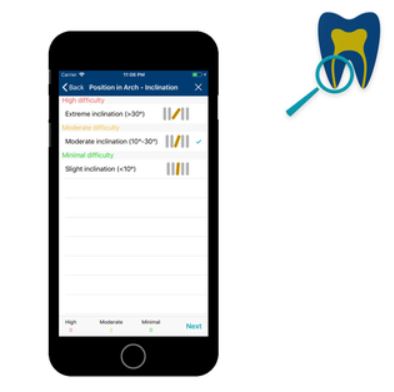AAE Updates Case Difficulty Assessment Form and App
 Periodically, our Clinical Resources are reviewed and assessed to determine if updates are needed.
Periodically, our Clinical Resources are reviewed and assessed to determine if updates are needed.
In 2021, a task force composed mostly of members of the Public and Professional Relations and Practice Affairs Committees performed such a review and agreed upon a set of changes to the AAE’s Case Difficulty Assessment Form.
The task force has also reviewed the case assessment app known as “EndoCase” and made changes so the app and form are similar. Download the EndoCase App in your Apple App Store or Google Play!
Additionally, the Case Difficulty Assessment Form was translated into Spanish. Launch Spanish-translated version.
The updated form is available on the AAE’s website, and a summary of key changes follows below:
- "Consider using cone beam computed tomography (CBCT) for assessing moderate and high difficulty cases" was added in the guidelines for usage section.
- The term “Minimal Difficulty” was analyzed, since the descriptors for minimal do not seem to describe anything out of the ordinary of a routine case. After some discussion on alternate names, "Low Difficulty” was chosen, and we thus renamed this particular level of difficulty on the form.
- "C-shaped anatomy" was added as a High Difficulty categorization under Canal Morphology.
- Position in the Arch, Tooth Type was added as a criterion with first row definitions. Position in the Arch, Inclination was added with second row definitions. Position in the Arch, Rotation was added with third row criteria.
- Apex Diameter was added as a separate row using closed apex for minimal, semi-closed apex (1-1.5mm) for moderate, and >1.5mm for high.
- “And chamber” was added after "canal(s)" in the Low and High Difficulty columns of Radiographic Appearance of Canal(s).
- “No history of trauma” was added in the Low Difficulty column of Trauma History.
- "Other anomalies such as radix ento/para molaris" was added in High Difficulty under Canal Morphology.
- A new category was added to the row above “Resorption”, that details the proximity of the root apices to vital structures such as the IAN or mental foramen. Thus, for Low Difficulty, this measurement reads as >5mm from apices; for Moderate Difficulty: 3-5mm; and for High Difficulty: <3mm.
- “ASA V” was removed as a treatment consideration under Medical History, High Difficulty.
We would also like to recognize the following individuals who worked tirelessly to review and update the form:
Dr. Patrick Battista
Dr. Craig Dunlap
Dr. Mark Desrosiers
Dr. Tyler Guinn
Dr. William Ha
Dr. Andrew Miller
Dr. Avina Paranjpe
Dr. Ove Peters
Dr. Dentonio Worrell




